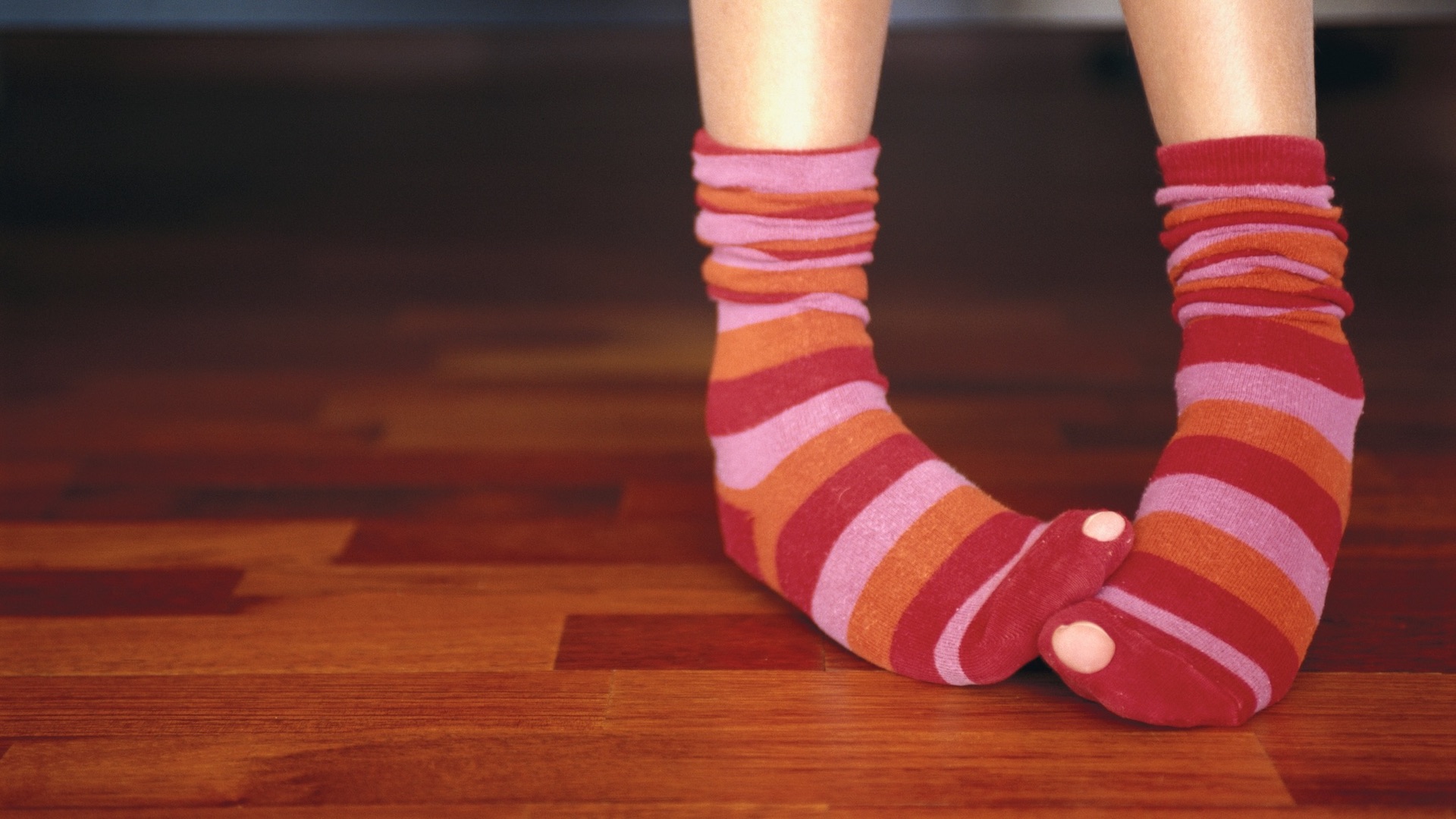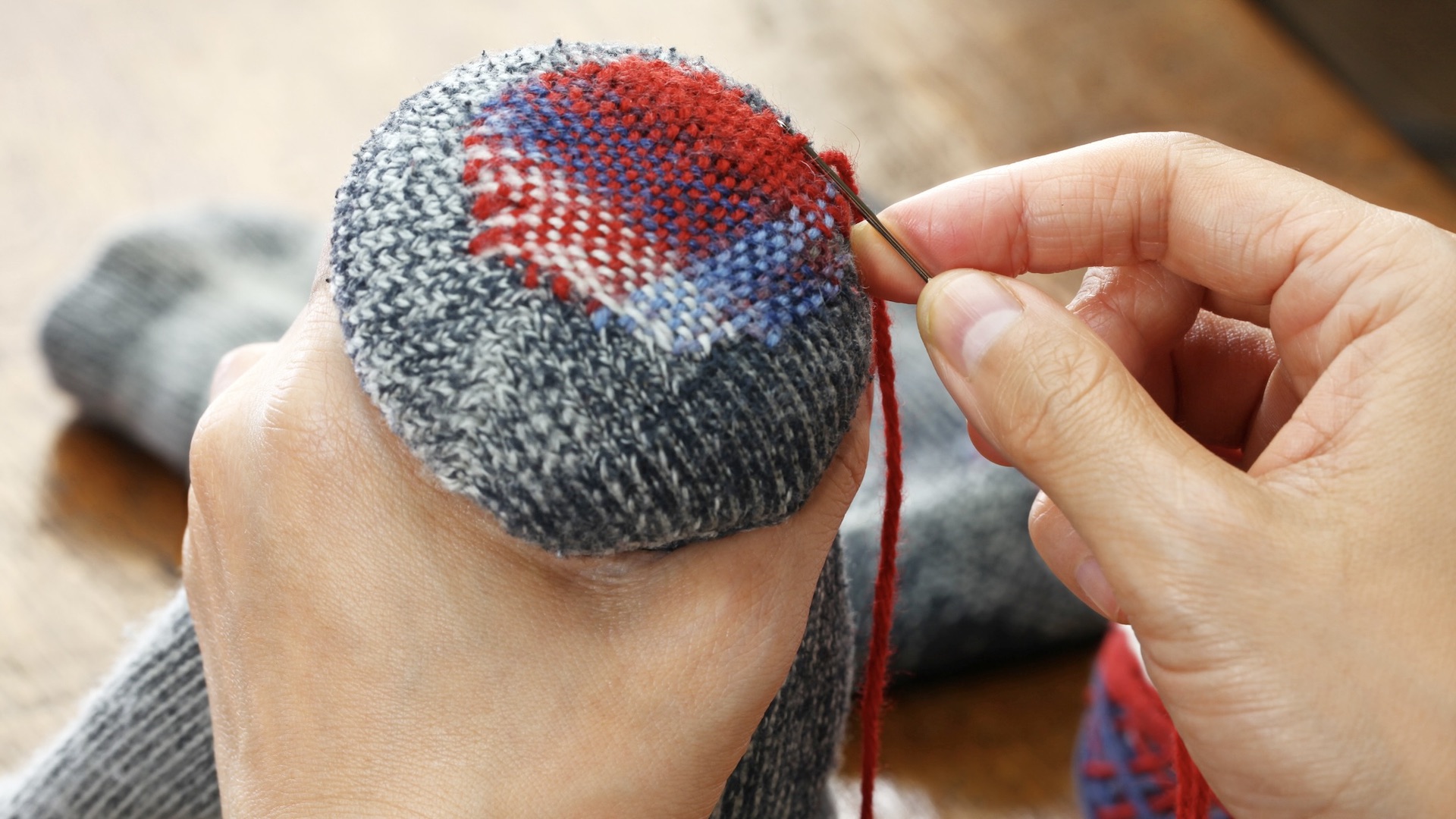How to repair running socks – three top tips to keep your footwear going the distance
Three easy techniques to give your favorite running socks a new lease of life

Worn running socks are commonplace, especially if you are a keen runner – and chances are, it will be your favourite socks that end up with holes in them. I always find that the running socks that I’m most likely to reach for in my sock drawer, are the ones that have grown holes. But of all the best running socks, those are the ones I most want to hold on to.
A comfortable pair of running socks – that don’t rub or cause blisters or irritations – is an item of pure joy, in my opinion.
Of course, you could choose to buy new running socks, but these days we are encouraged to be more environmentally friendly and repair outdoor clothing. In addition, running socks can be pricey and if you run many miles each year, you’ll end up spending a small fortune on kit.
So, why not repair your running socks? Here's how...
When to repair running socks
It’s a good idea to repair small holes and smaller areas of wear in running socks as soon as you spot them. The larger the holes become, the harder it is to do a good repair.
Keep an eye on your running socks and look for small holes appearing at the toes, heels and on the sole of the sock.
How to repair running socks
There are several different ways to repair running socks, including darning, using fusing web and patching.
Advnture Newsletter
All the latest inspiration, tips and guides to help you plan your next Advnture!

1. How to repair running socks by darning
Darning isn’t too difficult and with a few items and techniques, you could improve the longevity of your best running socks.
The basic materials for darning a sock include a darning needle, some yarn or embroidery thread – choose thread to match the color of the sock or something contrasting – and a darning egg or mushroom. If you don’t have a mushroom you could use lightbulb, the base of a jar, or a bottle, or something similarly sized and smooth.
There are different darning techniques to suit different wear on the socks.
How to darn a sock that is worn at the heel
First you need to stretch out the heel, or other area, of the sock that is showing wear. A darning mushroom is useful for this. Push the mushroom into the area that is worn and use elastic, such as a hairband or elastic band to hold it in place.
Then take you darning needle and yarn. You might choose to use one or two strands of the yarn, rather than the full thickness. Thread the needle but do not tie a knot at the end of the yarn.
Think of the area of wear in the sock as being inside an imaginary box. Then start at one "edge" of the box, pulling the thread through the first stitch and leaving about 2cm loose at the end.
Do a running stitch along one length of the outer side of the box, “grabbing” the small fibers of there sock as you go along.
Then turn the darning mushroom round 180-degrees and sew another running stitch line in the opposite direction next to the first line. Keep going with the running stitch, backwards and forwards until you have created a box on the area of wear. Now tie off the end of the thread with the 2cm you left loose.
Do the same again but in the opposite direction so you create a criss-cross pattern of stitches, rather like lattice work on a pie. Make sure your new stitches go above and below – or over and under – the stitches you have already sewn.
It can be done fairly roughly but the aim is to reinforce the fabric of the sock by adding yarn stitches in a box shape to the worn area.

Darning a large hole in a sock
Start in the same way as for the worn area of the sock and use a darning mushroom, or similar. Look at the threads in the knit of the running sock and choose the number of threads in the yarn to suit. So, if the sock thread is fine, use fewer threads in the yarn for the repair.
Thread the needle and do not tie a knot at the end of the yarn. Again, think of an imaginary box large enough to cover the hole and start darning from one side to the next. Turn the mushroom 180-degrees and do a return line of stitches. When you reach the hole, just treat it as one stitch and keep sewing.
The new lines of thread start to cover the hole in the sock and reinforce the area. Do not pull the thread too much because if you do you’ll end up with an uneven feel to that area of the sock.
You want flat stitching, just as you would if you were darning a running sock where there is wear. Aim to replicate the natural tension of the sock.
Do the stitches in one direction and then turn 90-degrees to do more lines of stitches and create the lattice. When you do the running stitch, make sure to go over and under the darning you have already sewn, so as to form a woven pattern.
How to darn a hole at the toe of the sock
This is an area that requires care when darning because you do not want stitching that will irritate or rub you as you run. You can use normal sewing thread for this sort of repair.
Thread the needle and leave it as a double thread, tying a small knot a the end. Slide your hand inside the sock and push your fingers gently towards the hole. Hold the hole open and flat and start sewing from one side of the hole.
Pull the thread through to reach the knot, then push the needle and thread through the lower edge of the hole. Bring the needle out at the top of the hole, then go back into the edge on the same side of the hole and out at the bottom of the hole.
Keep repeating this in-out pattern but don’t pull the thread too tightly. Knot the thread at the opposite side, trim the threads and you’re good to go for a run.

2. Repair running socks using fusing web
You can buy fusing web on-line. Turn your socks to be repaired inside out. Cut a piece of fusing web big enough to cover the hole in the sock.
Aim to gather the fabric of the sock together so you can no longer see the hole and then place the web over the hole.
Turn on an iron, with the setting at low or wool, and place a piece of wax paper or baking parchment over the web and then hold the iron on top for 5 to 10 seconds until it has fused.
Leave the sock to cool and "fix". Then you can go for a run.
3. Repair running socks by patching a hole
A fabric patch could be another good solution for a sock repair but you need the patch to be made of a soft and flexible fabric. Choose a patch that is just large enough to cover the hole and then follow the instructions, usually using a warm iron, to affix it in place.
Give worn running socks new life
Repairing running socks rather than throwing them out is great for the environment and good for your bank balance. These techniques will also be good for repairing your best hiking socks – as we explain in this guide.

Fiona Russell is a widely published adventure journalist and blogger, better known as Fiona Outdoors. She is based in Scotland and is an all-round outdoors enthusiast with favorite activities including trail running, mountain walking, mountain biking, road cycling, triathlon and skiing (both downhill and backcountry). Aside from her own adventures, Fiona's biggest aim is to inspire others to enjoy getting outside and exploring, especially through her writing. She is also rarely seen without a running skort! Find out more at Fiona Outdoors.
